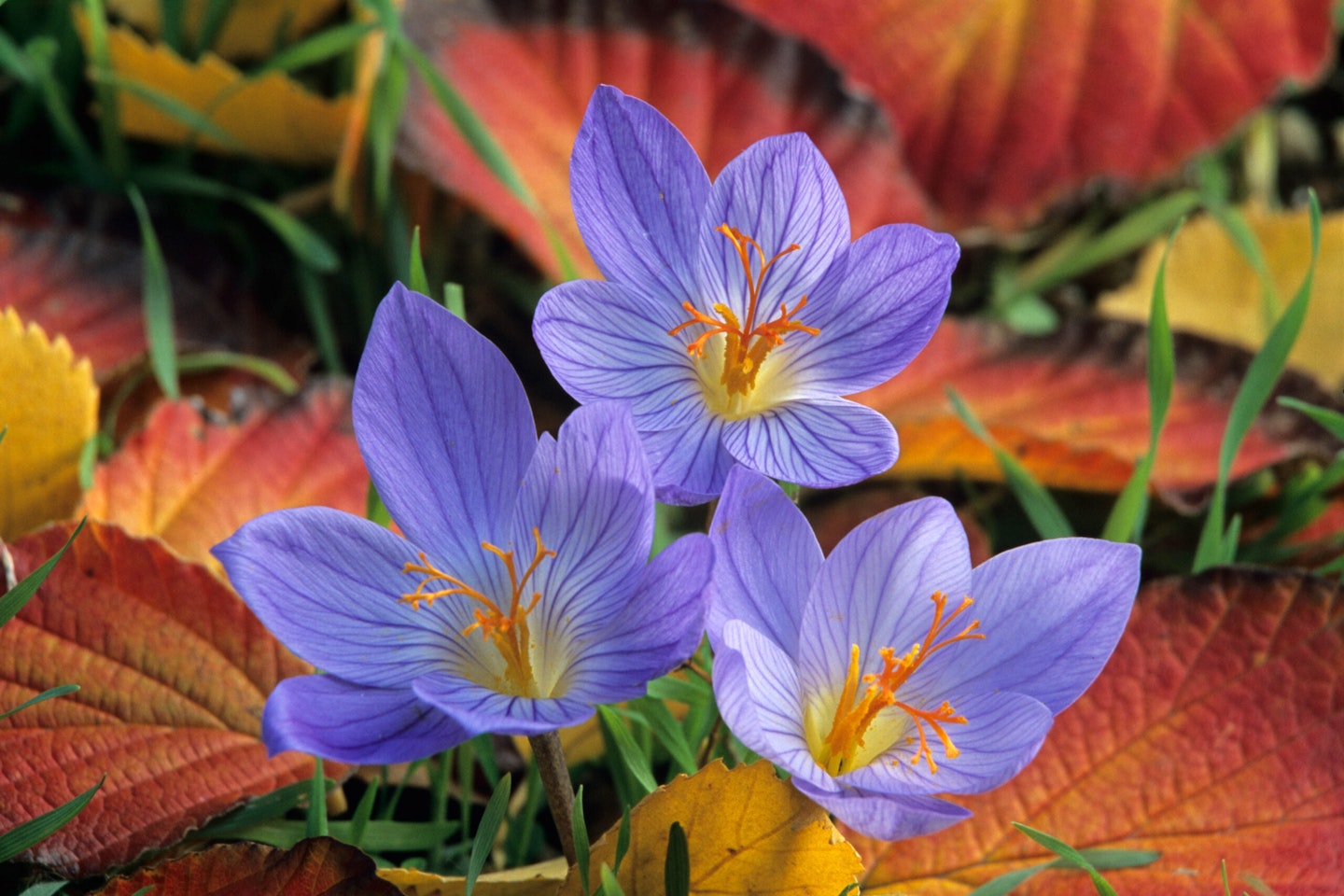Think of bulbs and you’ll no doubt conjure up images of spring-flowering daffodils and tulips in all their vibrant glory, but bulbs aren’t just for heralding the start of a new garden season. There’s a host of interesting bulbous plants that come into their own between late summer and winter, and these oft-neglected species can pep up your borders as other plants start to fade, adding an extra layer of interest and colour among late-flowering perennials.
They’re ideal companions for deciduous trees and shrubs whose leaves are developing vivid autumnal hues, and they can be a good source of pollen and nectar for bees and other pollinating insects, providing them with an important end-of-season food supply.
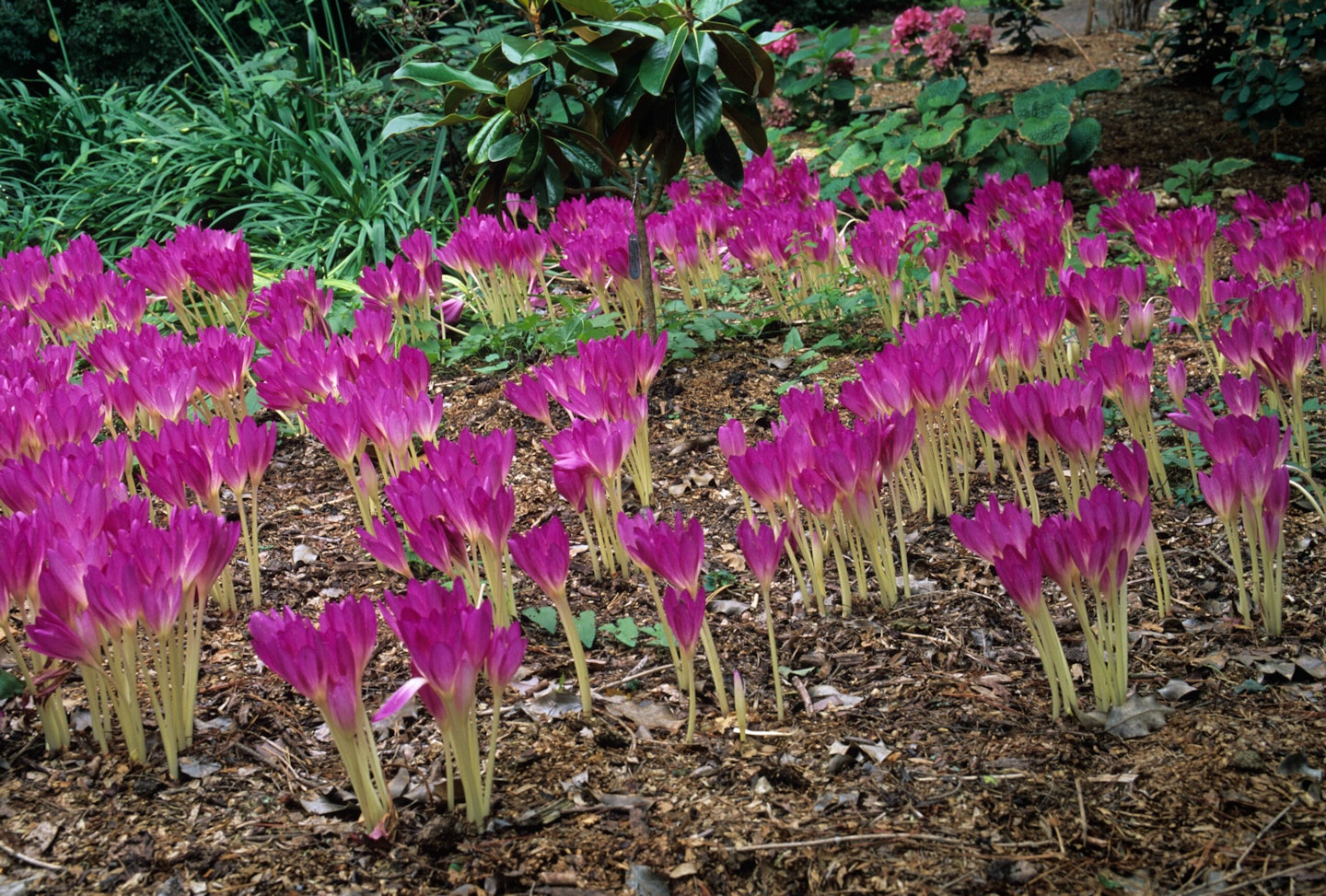
Late-season lovelies
As with spring-flowering bulbs, these later ones have the most impact when planted en masse, and some of them can be naturalised in grass too. Not only do their blooms look like jewels, sparkling with morning dew, the grass around them provides some support to the flower stems, especially during spells of wet weather. But it’s important to refrain from cutting the grass so the bulb foliage can die back, feeding the bulbs for next year’s flower display. These bulbs are generally available to order from specialist bulb suppliers from early summer. They’re best planted in mid- to late summer, and if this is the case they’ll often flower that autumn.
Colchicums
With their goblet-shaped flowers, colchicums are similar in appearance to crocuses, in fact they’re often referred to as autumn crocuses. However, they’re a different genus and are more closely related to lilies. They’re often known as naked ladies because the flowers emerge without any leaves around them. There are over 100 different species and many cultivars, some flowering in winter or spring. The large-flowered autumn bloomers are best grown in sun and fertile, well-drained soil in a sheltered spot, as wind can damage the flowers. The flowers grow to around 15cm tall and come in white, purple or various shades of pink and typically have a single ring of petals, although there are some that have multiple rows such as Colchicum autumnale ‘Alboplenum’. The leaves develop fully in spring and are quite large, so bear this in mind when planting, otherwise they might overwhelm smaller spring plants. Plant so the nose of the bulb sits just below the surface of the soil. All parts of colchicums are poisonous, so wear gloves when handling.
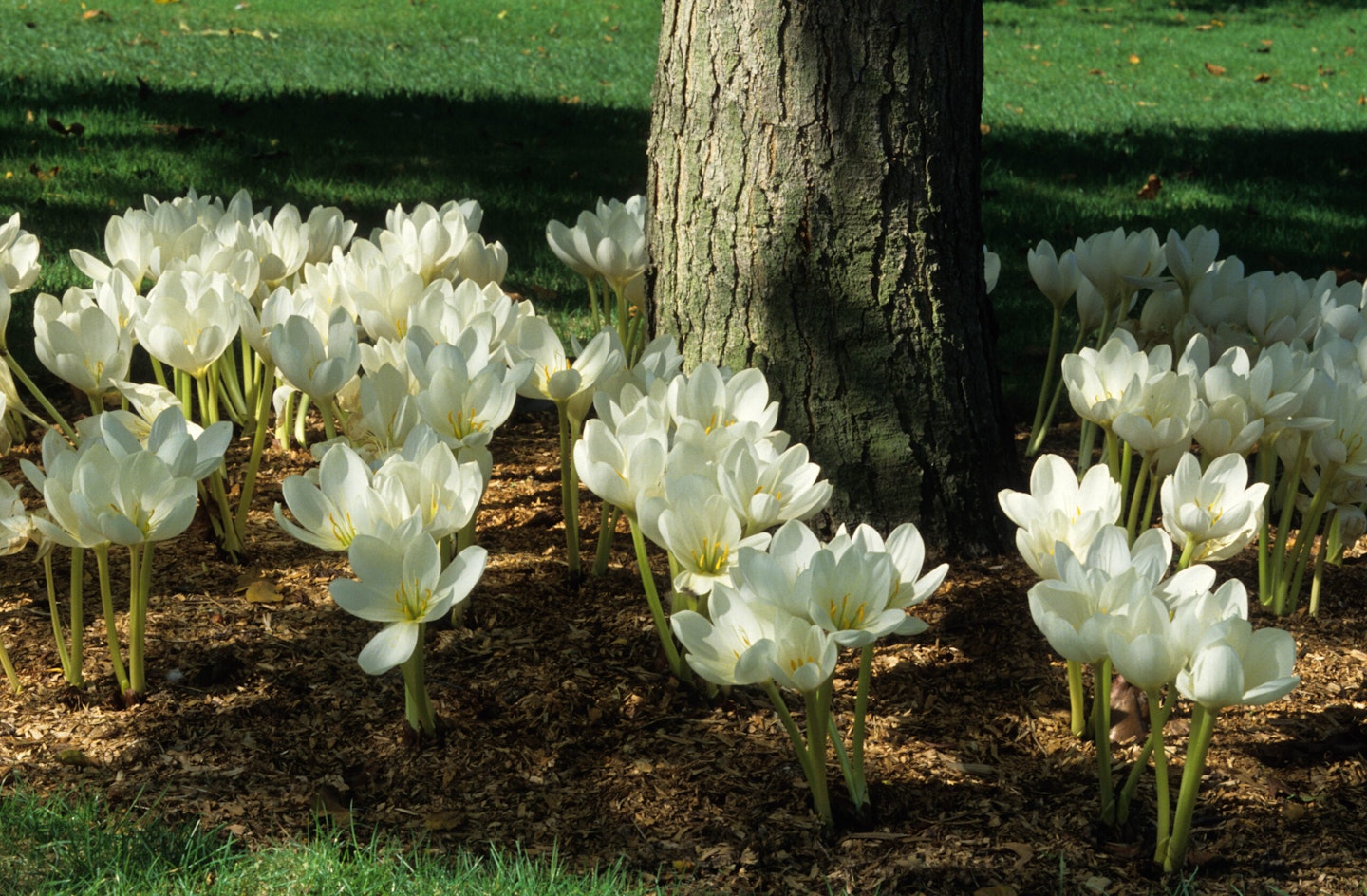
Nerines
These South African bulbs pack a punch with their flamboyant pink or white blooms, which grace the garden from September to November. Each sturdy, upright stem, around 45-60cm tall, is topped with an umbel of up to a dozen individual blooms with slender, wavy petals and recurved tips. There are around 25 different species and they vary in hardiness, with those that need frost protection making good cool conservatory plants. Nerine bowdenii is the hardiest, and it’s happy in free-draining soil in a sun-baked spot – the base of a south-facing wall is perfect, or grow them in a container. Plant with the top of the bulb poking just above the soil. Also look out for amarines, hybrids of nerines, and Amaryllis belladonna, which have larger flowers.
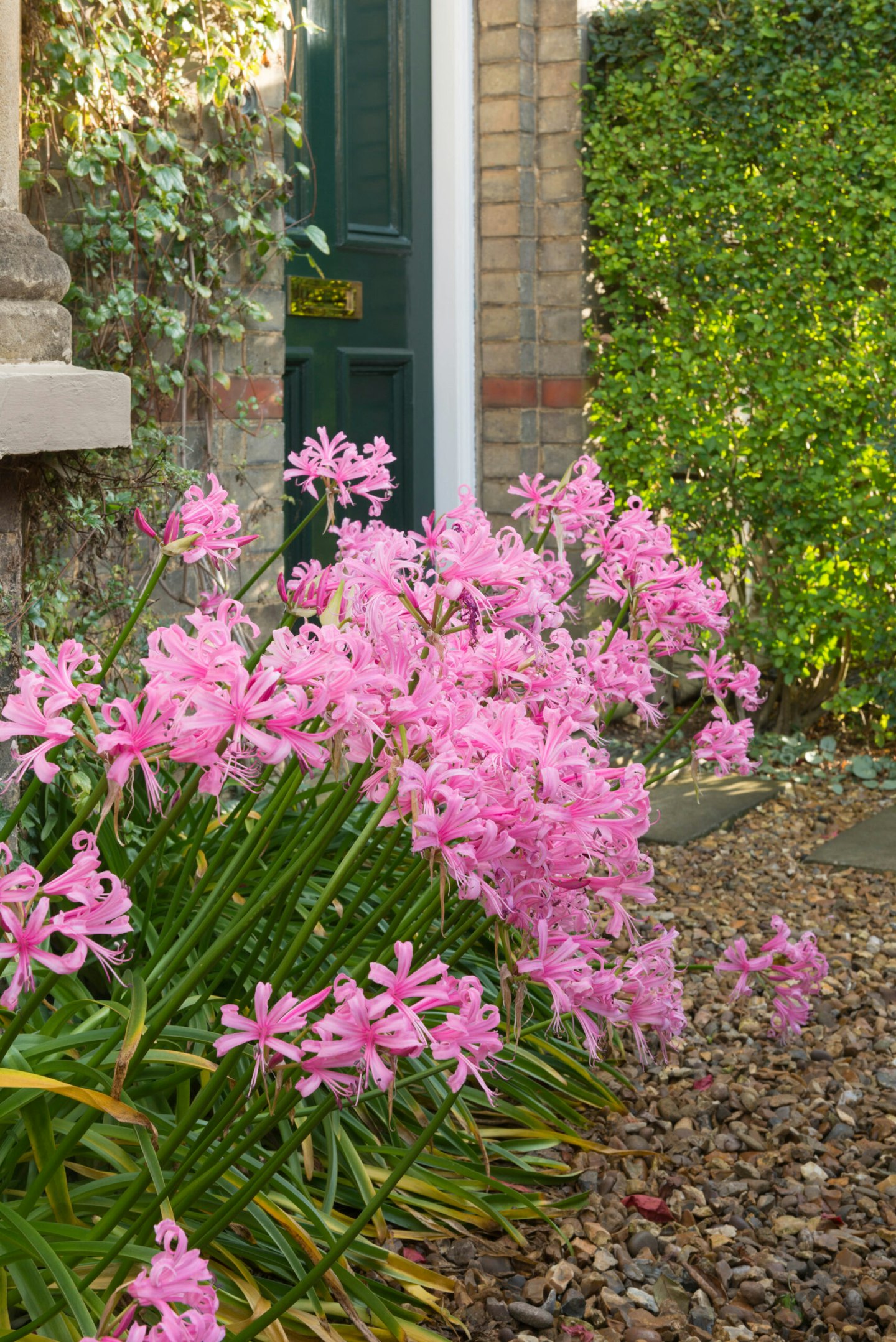
Acis autumnalis
Also known as the autumn snowflake, this delicate-looking plant produces grassy foliage that starts to die back in late summer, and as it does so, slender, red-tinted stems that are 15–20cm tall emerge, bearing dangling, bell-shaped white flowers for several weeks. Over time the bulbs increase slowly to form clumps of flowers. It likes a sunny spot in fertile but well-drained gritty soil. It’s a good choice for a raised bed or a deep pot, just make sure you add plenty of grit to the compost.
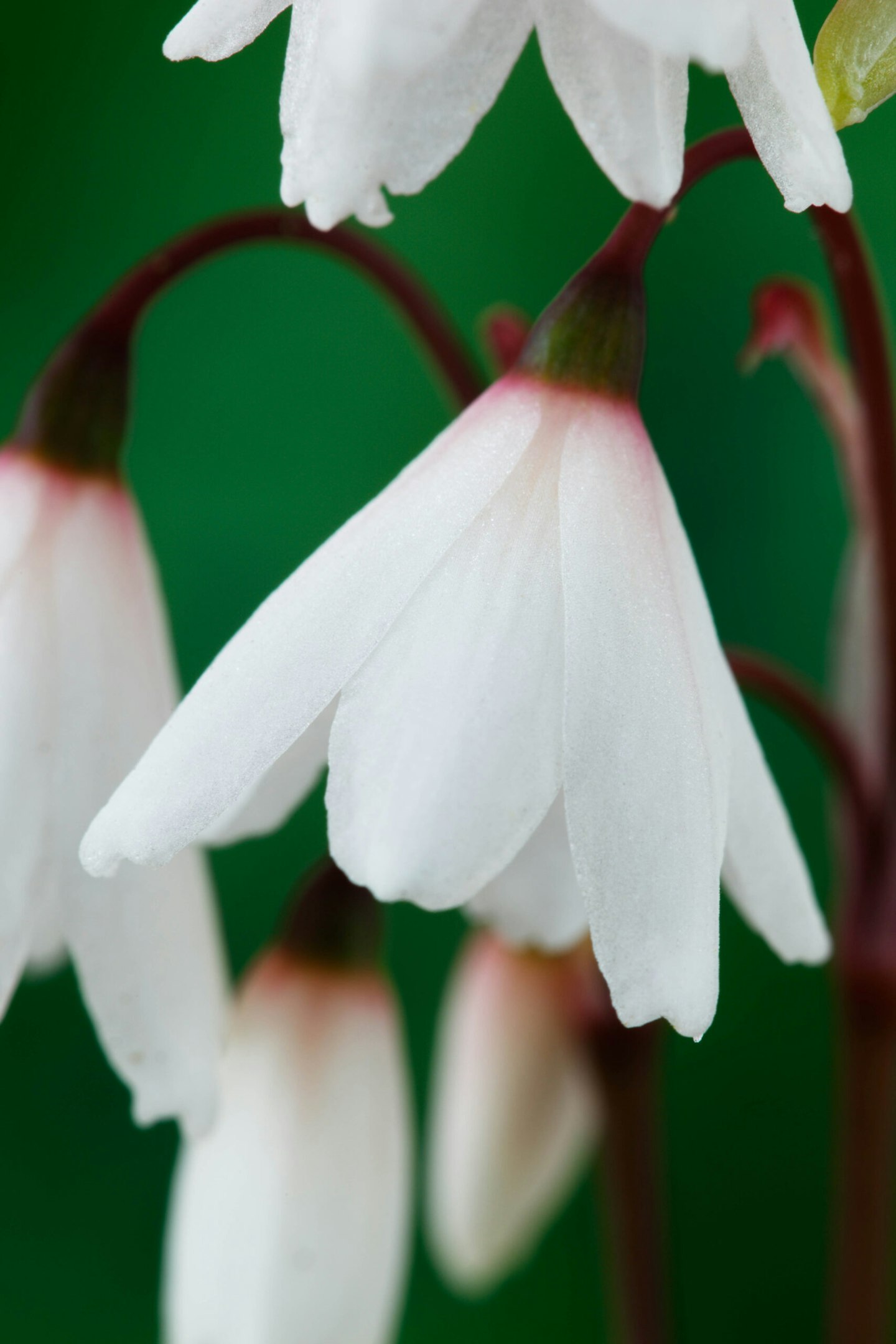
Sternbergia lutea
It’s unusual to find bright yellow in the garden in late summer and early autumn, which might explain why this bulb is also referred to as the autumn daffodil. It’s a member of the same family but it’s more similar in flower shape to a crocus, with its goblets of glowing gold held amid dark green, narrow leaves. Native to the Mediterranean, it requires plenty of sun and well-drained soil and grows to around 15cm high.
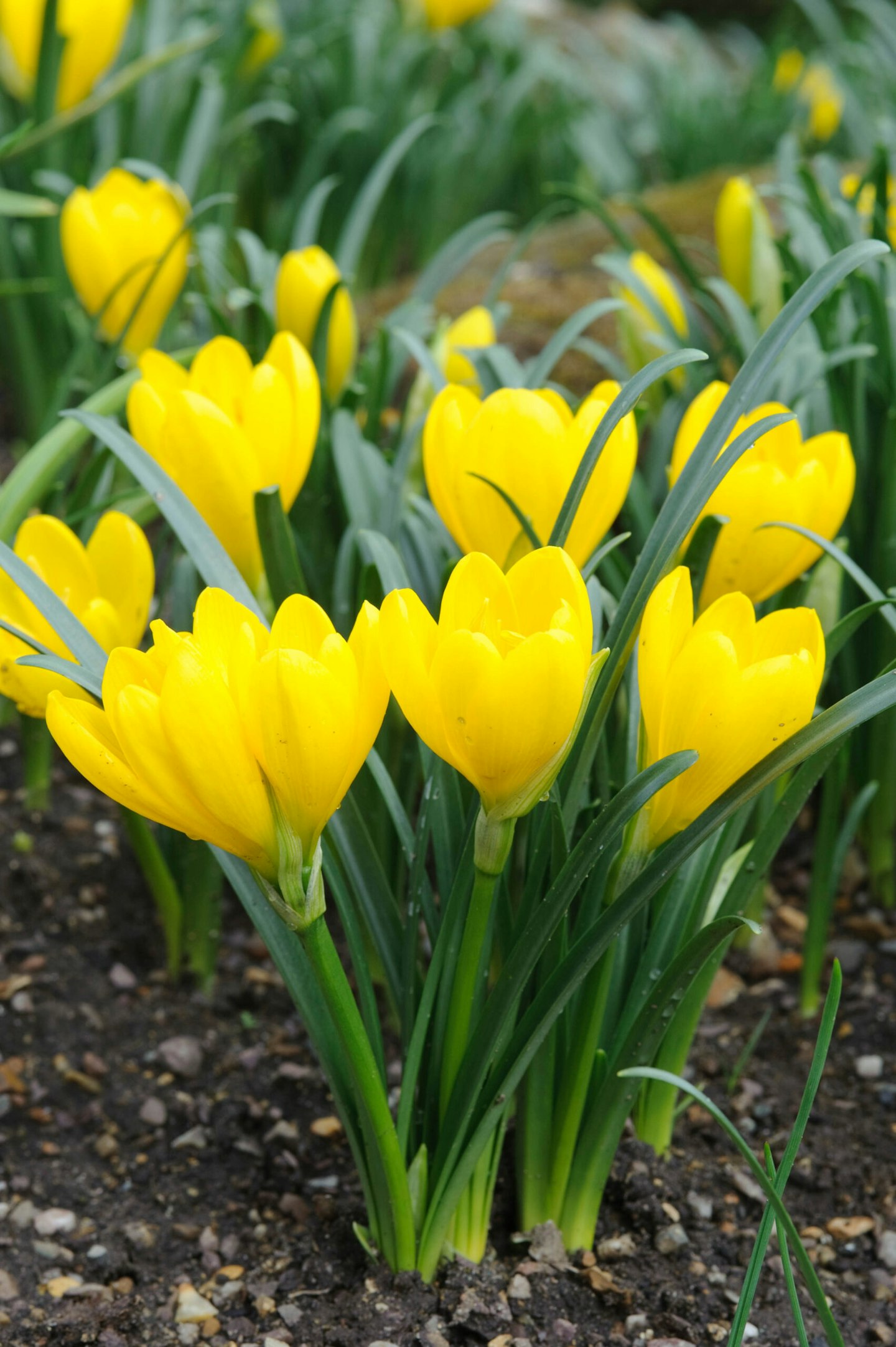
Galanthus reginae-olgae
Queen Olga’s snowdrop, as it is commonly known, is native to the mountains of Greece and is named after Queen Olga, the late Prince Philip’s grandmother. It was once thought to be just an autumn-flowering form of the common snowdrop, Galanthus nivalis, which blooms in mid- to late winter, but it’s now recognised as a separate species. Typically it flowers in October, although sometimes earlier, and it will confuse and delight visitors to your garden. It thrives in a south-facing location, with plenty of sun in slightly alkaline soil, but it will tolerate some shade and acid soil.
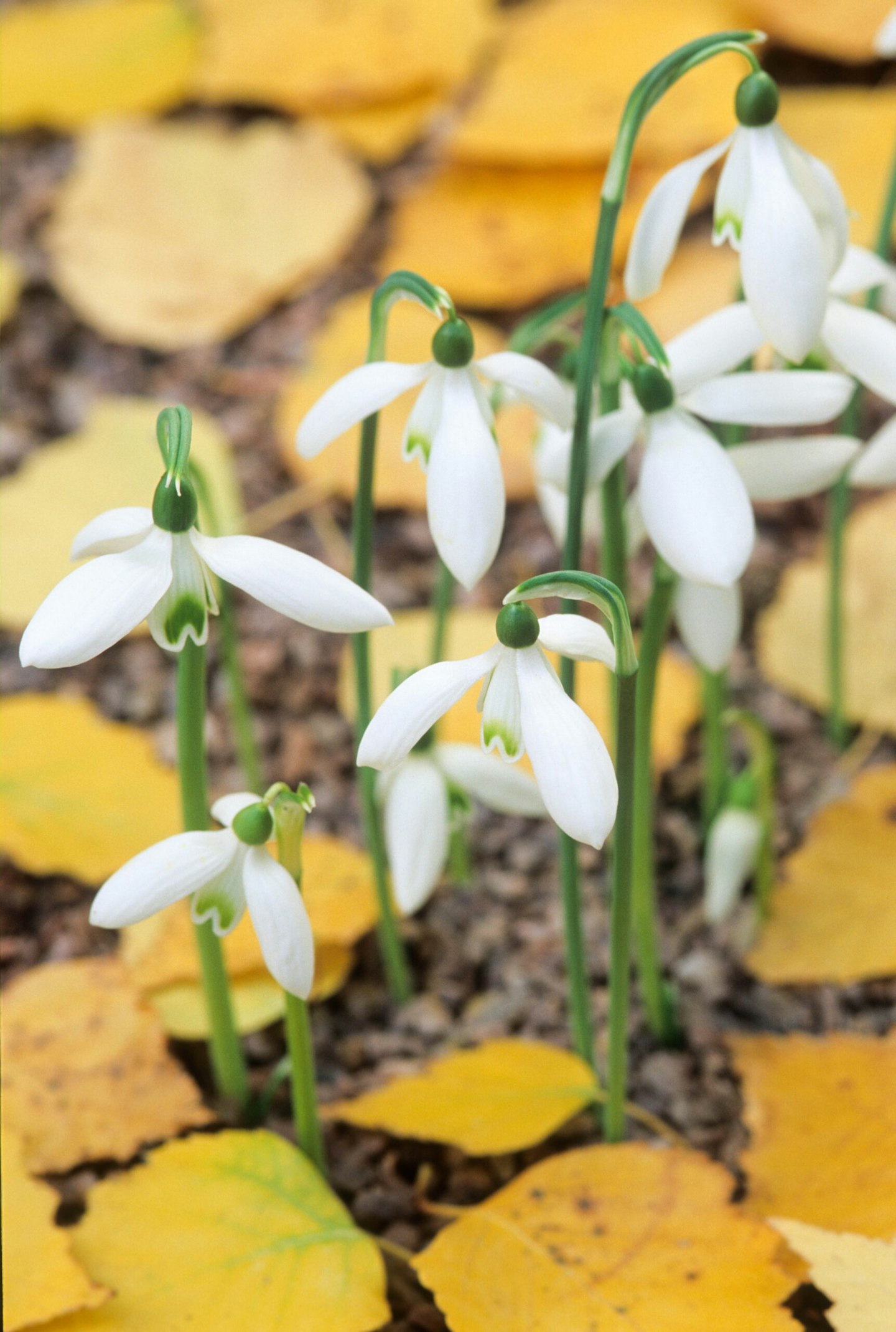
Cyclamen hederifolium
The autumn-flowering cyclamen first appears in August, its diminutive flowers with distinctive swept-back petals in pink or white atop stems around 7cm high. These are followed by ivy-like, arrowhead-shaped, dark green leaves with silver markings that provide attractive winter ground cover before retreating underground in spring. Grow it in humus-rich soil that’s free-draining, in part shade. It’s lovely planted at the base of trees, where they gradually spread thanks to ants who are attracted to the sticky seed coating and carry the seed away.
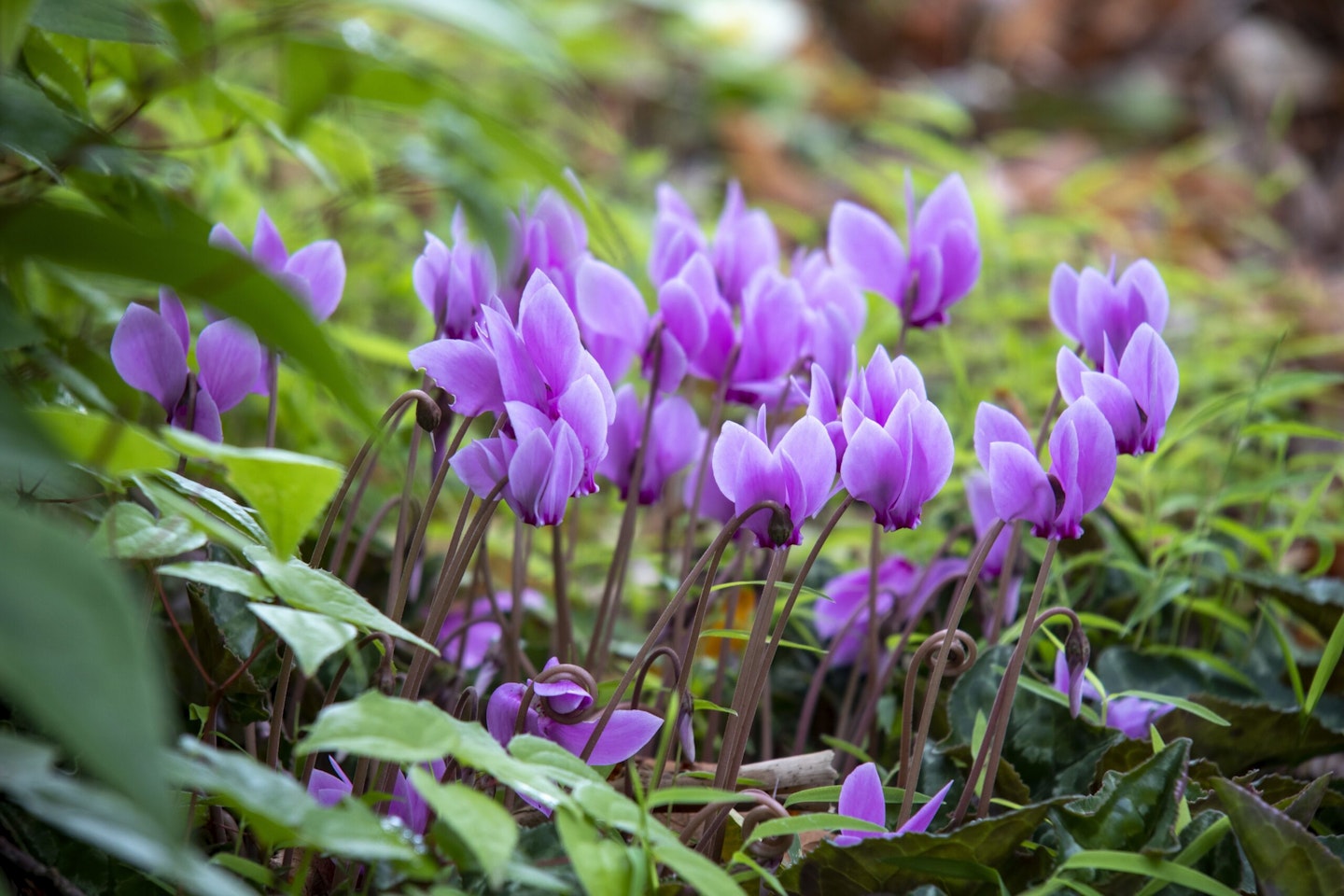
Crocus speciosus
There are more autumn than spring-flowering species of crocus, but many of them need to be grown under glass in this country. Crocus speciosus, however, can be grown outdoors and is said to be the easiest to grow in the UK climate. It’s also one of the earliest of the autumn-flowering crocuses to bloom, appearing in September. It has silvery lilac-blue flowers with deep blue veins, 10-15cm high and tufts of narrow green leaves that develop as the blooms fade. ‘Albus’ is a white-flowered form. Plant it in sun or part shade in soil that’s free draining. It’s a vigorous plant, increasing freely, and is well-suited to naturalising in short grass.
